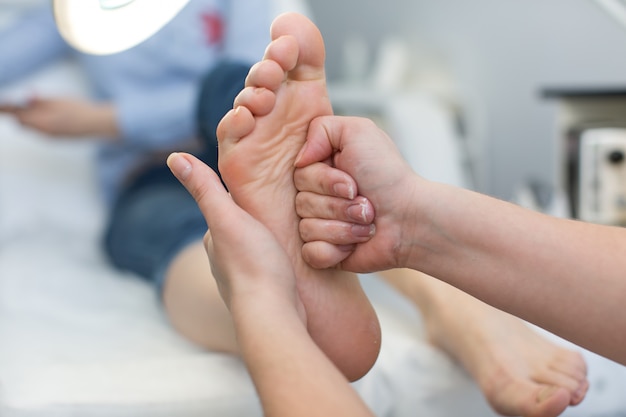What do you mean by pronation & their types?
by Jill Hunter Podiatry PaediatricsPronation is the way of rolling your foot inwards. Let's discuss the three different types of probation.

Gait analysis is highly essential to the diagnosis and treatment of patients of a podiatry clinic. This is basically a way to determine which footwear is suitable for your feet. Generally, professional podiatrists start gait analysis process by knowing the current condition of your feet. They also focus on your head, shoulder, knees, toes, etc. In this article, we are going to discuss, what do you mean by pronation. Let's start the discussion below.
What is pronation?
What is pronation?
Pronation is the way of rolling your foot inwards. This is a natural movement that mainly happens during foot landing while walking or running. During the phase of pronation, there are 3 cardinal components mainly composed. They include forefoot abduction, ankle dorsiflexion and subtalar eversion. It is a distributing impact on your body. According to the podiatrists in Perth, pronation is the natural part of our gait cycle. Pronation is essential & it helps to avoid injury. Pronation is generally classified into different types. They include overpronation, underpronation and neutral pronation.
Overpronation
Overpronation
Overpronation is the most common type of pronation found in many people in Perth. This condition is generally found in runners with flat feet or low arches. As compared to other types of pronation, this is found in most of the people. Additional foot movement may cause excess friction on different areas of our foot that result in callusing & pressure spots. People with overpronation have a chance to face many foot problems such as patellofemoral pain syndrome and plantar fasciitis. However, these conditions can be treated by wearing the right footwear and custom orthotics.
Underpronation
Underpronation
Underpronation is also known as supination. It occurs when the outer side portion of our feet strike the floor with a little inward movement. It causes a large shocking transmission & jarring effect through our lower leg. Underpronation is generally found in people with high arches. People with underpronation may face Achilles tendinitis and plantar fasciitis that affect our flat feet. Custom orthotics help to treat this condition by improving the pressure distribution. So, if you have this condition, consult with your nearest podiatry clinic for orthotics.
Neutral
Neutral
Neutral pronation generally occurs when our feet touch the floor & then the feet roll inward in a proper manner. As a result, the weight is distributed evenly. Neutral pronation helps to absorb shock. This is a very normal condition.
So, these are all about pronation. Professional podiatrists can treat these problems by determining the conditions of your feet. They give a full range of potential solutions at a reasonable price.
So, these are all about pronation. Professional podiatrists can treat these problems by determining the conditions of your feet. They give a full range of potential solutions at a reasonable price.
Sponsor Ads
Created on Sep 2nd 2020 05:01. Viewed 637 times.
Comments
No comment, be the first to comment.




